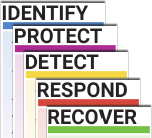
The topic of patch management is one that often causes IT teams to look the other way. Most know that patching is one of the most fundamental, critical steps in securing and optimizing an IT environment, yet it is frequently not prioritized for several reasons. To start, the patching process can be time-consuming and mundane, and organizations may not have the time or resources to keep up with it, and there are always other more interesting priorities.
To compound the problem, organizations may lack insight into all the assets and software in their environment, especially in mixed, cross platform environments. As a result, they may not know when vulnerabilities exist. If that isn’t enough, when a patch is deployed it could cause unforeseen issues, which is why testing prior to deployment may be a time-consuming yet necessary additional requirement.
According to Nick Logan, our Technical Services Manager and in-house patch management expert, “Patching early and often is the best way to both protect your IT environment and reduce the chances that your systems will be negatively affected. The vast majority of attacks against systems are utilizing vulnerabilities that already have patches to remediate.”
Furthermore, says Nick, “Ignored legacy applications, that might be the most vulnerable to a patch negatively affecting, likely need to be addressed anyway due to changes in business operations, lack of features, or reliance on unsupported software.”
Fortunately, there are ways that you can prioritize patching in your organization to keep your networks, data and people more secure and protected from cyber threats or attacks that may arise from out-of-date software. Specifically, patch management software options, other than WSUS, exist that can take the pain out of the patching process and create a more secure network for your organization.
Keep reading to learn more about four effective, proven approaches to help ensure patching becomes a priority instead of an afterthought in your organization. And contact us today to learn more about how the right patch management software can help protect your network, data and people.
1. Change the Mindset of Your Team
Your IT team should understand the importance of patch management from a security standpoint. However, they may not always prioritize this function. While there may be other projects that have taken higher priority over patching in the past, now is the time to educate your department on the importance of an effective patch management plan and what it means to secure your network, data and people.
One way to do this is through adopting an industry standard cybersecurity framework like the one from NIST. Since patching is a fundamental step in securing any IT environment, it stands to reason that it is woven throughout these frameworks.
If you aren’t sure whether your organization is in alignment with the NIST framework, we offer cybersecurity assessments that can help you identify your posture, prioritize next steps and get your organization protected.
2. Ensure Asset Visibility and Inventory
Your ability to reduce risk is only as good as the visibility you have into your environment. An asset management solution helps you gain a full understanding of the assets you have and the vulnerabilities associated with each asset. With that knowledge, you are equipped to prioritize vulnerabilities, remediate issues, and communicate effectively with stakeholders.
3. Prioritize Based On Risk
It’s not realistic to think every vulnerability on every asset can be patched immediately. Coupling a vulnerability management process with patching will help your team understand the most critical patches to deploy to which assets first. The good news is that many modern patch management software solutions integrate with vulnerability scanners to help with this prioritization. Take, for example, the integration with Automox and Rapid7 – both partners of TREBRON.
4. Automate Patching with Advanced Patching Solutions
Cloud-based, cross-platform solutions give IT departments the ability to act easily and quickly across all their endpoints without the use of clunky legacy tools. By making it easy for IT teams to keep their endpoints automatically configured, patched and secured from anywhere in the world, these cloud-based solutions eliminate risk and instead focus on automated configurations. The result? Greater network security, incredible time savings, improved productivity – and far fewer headaches.
If you’re researching patch management software for your organization, consider tools from Automox, Ninja and others. When configured and implemented correctly, these platforms streamline the patching process and make it easy to keep your network more secure.
Ready to Prioritize Patching in Your Organization?
“Utilizing patch management tools that can patch the OS, third-party software, and make changes to the system configuration with scripting allows IT Departments rapidly assess the risk of known vulnerabilities against the OS and installed Software, prioritize testing on a subset of computer, then use the results of those tests to deploy against the entire company,” says Nick Logan, our in-house patch management expert.
“Patch Management tools give additional insight into the status of all the business’s machines, ensure compliance with IT Policies, and allow the IT Department to manage machines wherever they are deployed, without VPNs, GPOs, or other tools of the past that may not work well in today’s modern distributed businesses,” according to Logan.
“The best of breed products also support Windows, Mac, and Linux machines or servers. Trebron works with businesses just like yours and will use the experience to help mitigate the risk of patches having negative impacts and provide assistance with testing patches in your environment,” says Logan.
It’s important to note that because common tools like WSUS are not cross-platform, they cannot solve these issues or concerns. Patching can be complex and, if not understood or performed properly, can lead to further headaches and frustration, leaving your organization vulnerable to cyber attacks and threats.
However, by following these recommendations identified above, you can take the first steps toward prioritizing patching in your organization and thus create a far more secure network.
If you have questions about our best-in-class patch management software or if you would like to speak with us about maximizing cybersecurity for your business, school or organization, contact us today. We look forward to hearing from you and helping you gain peace of mind that you’re protected.

